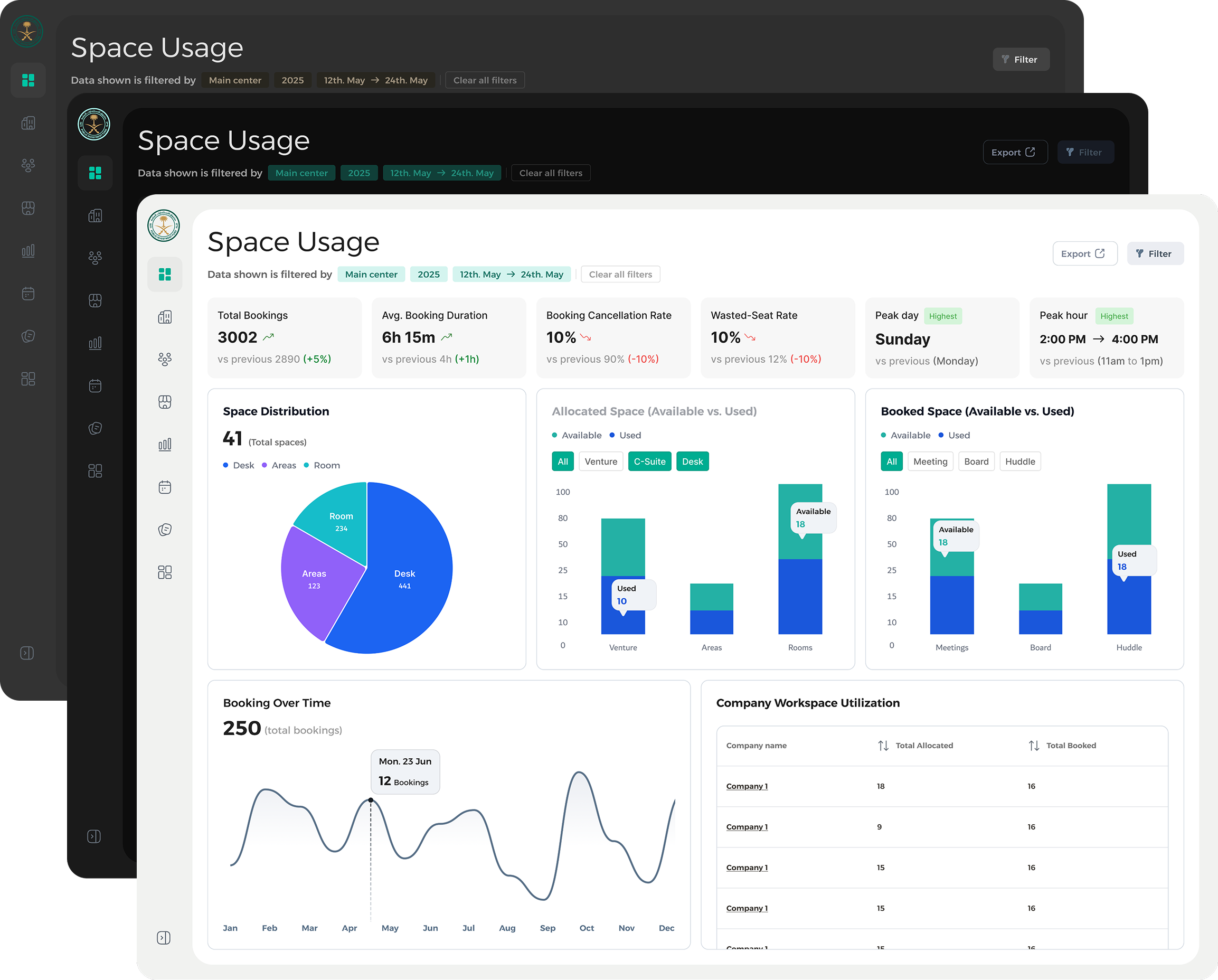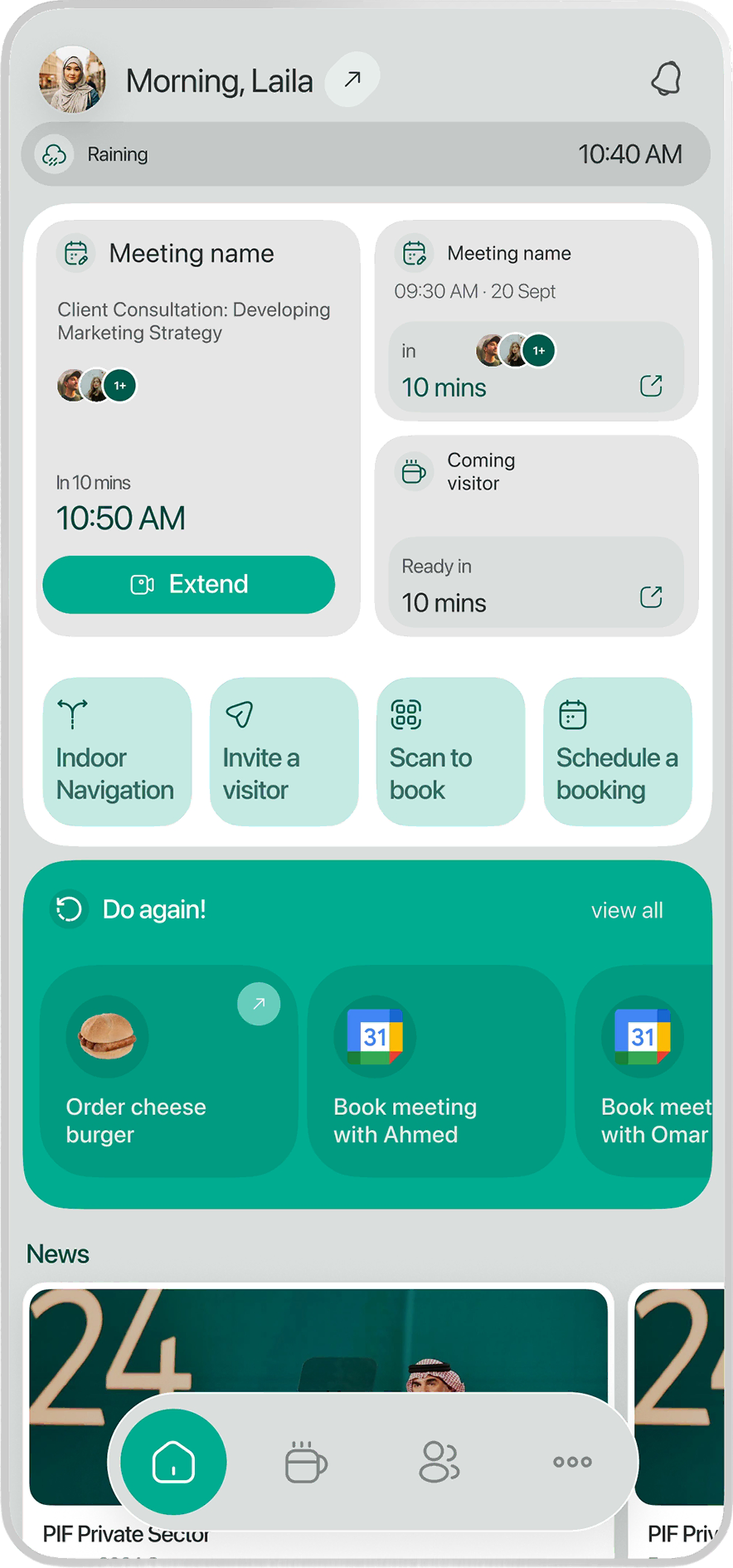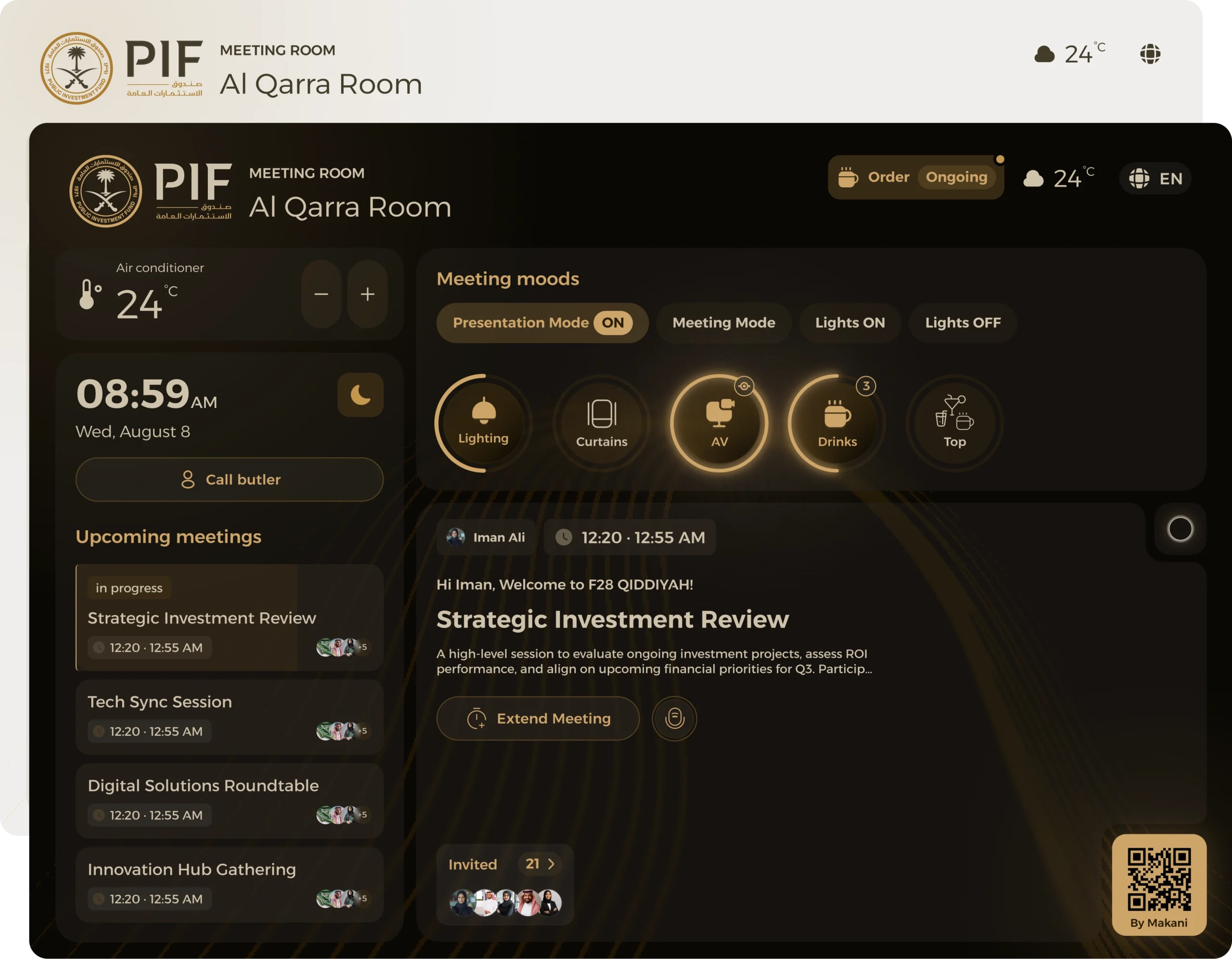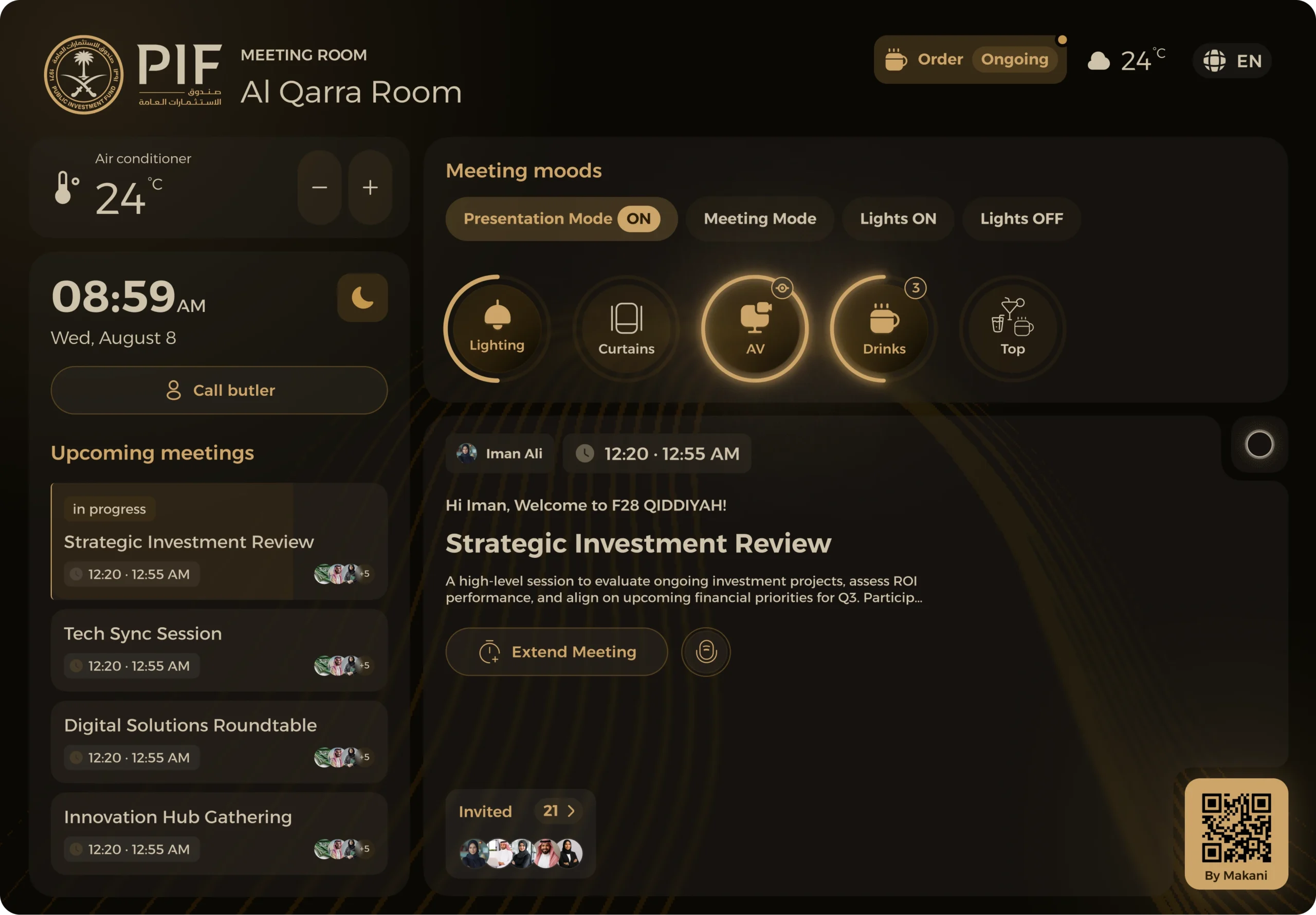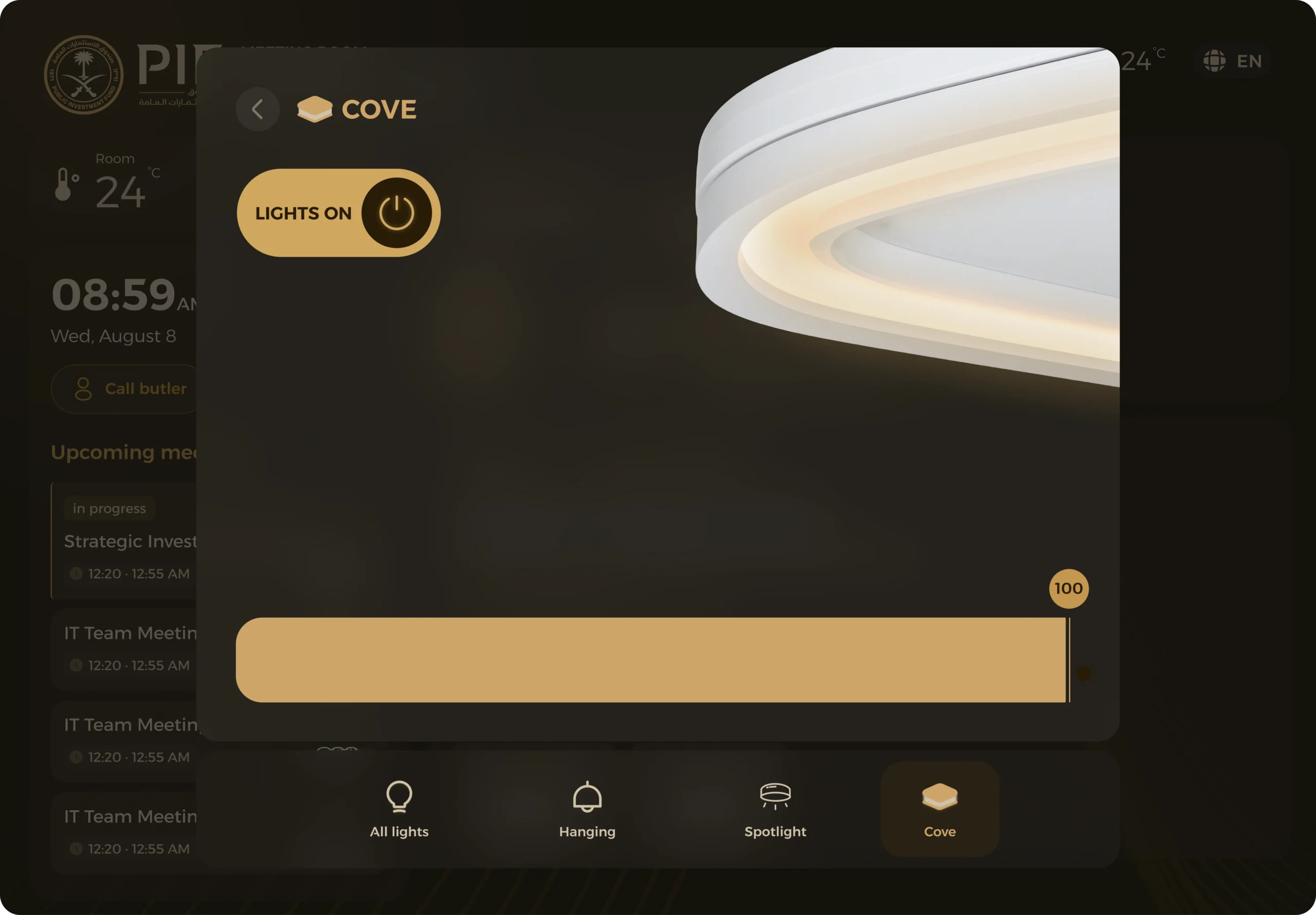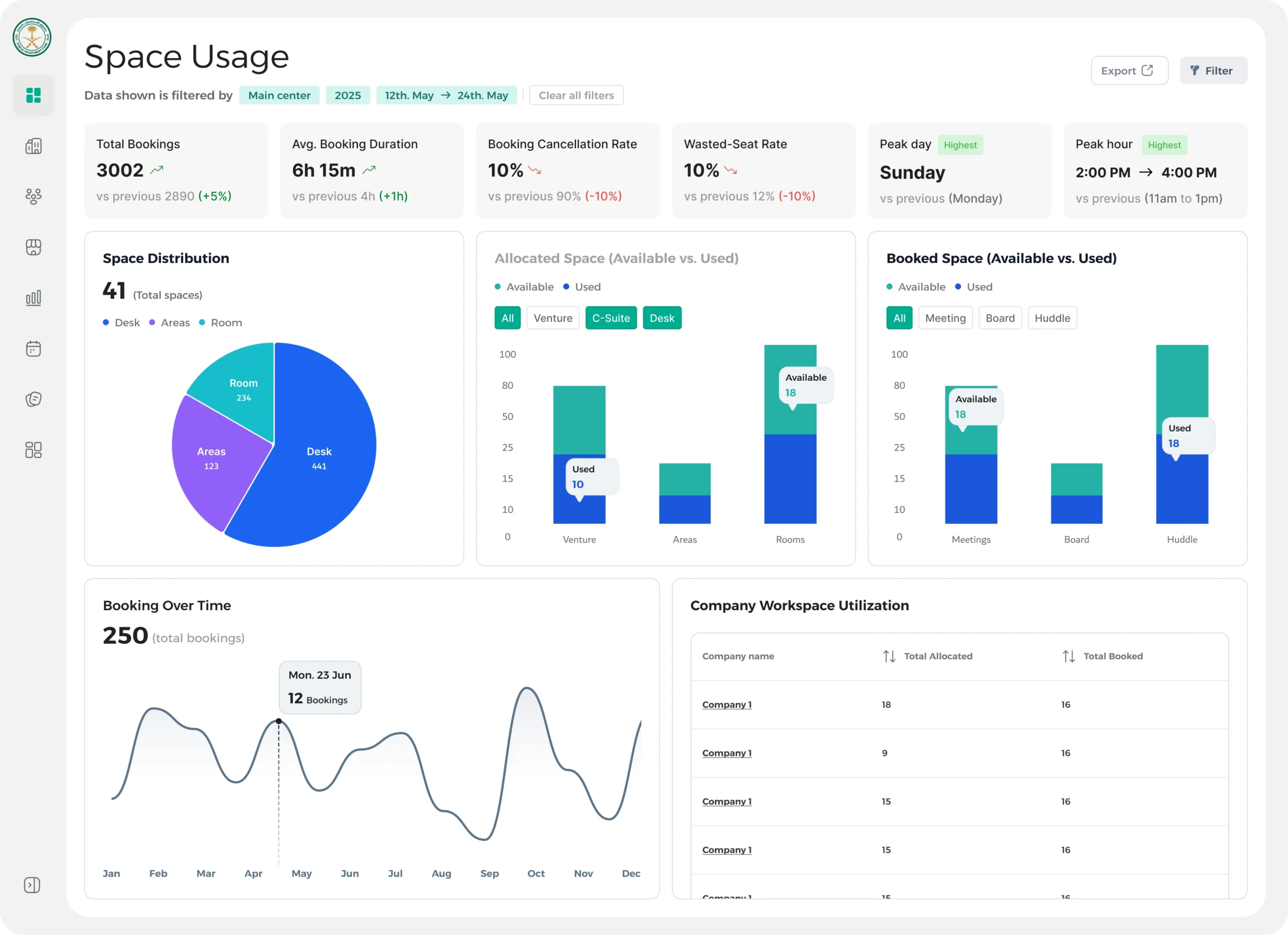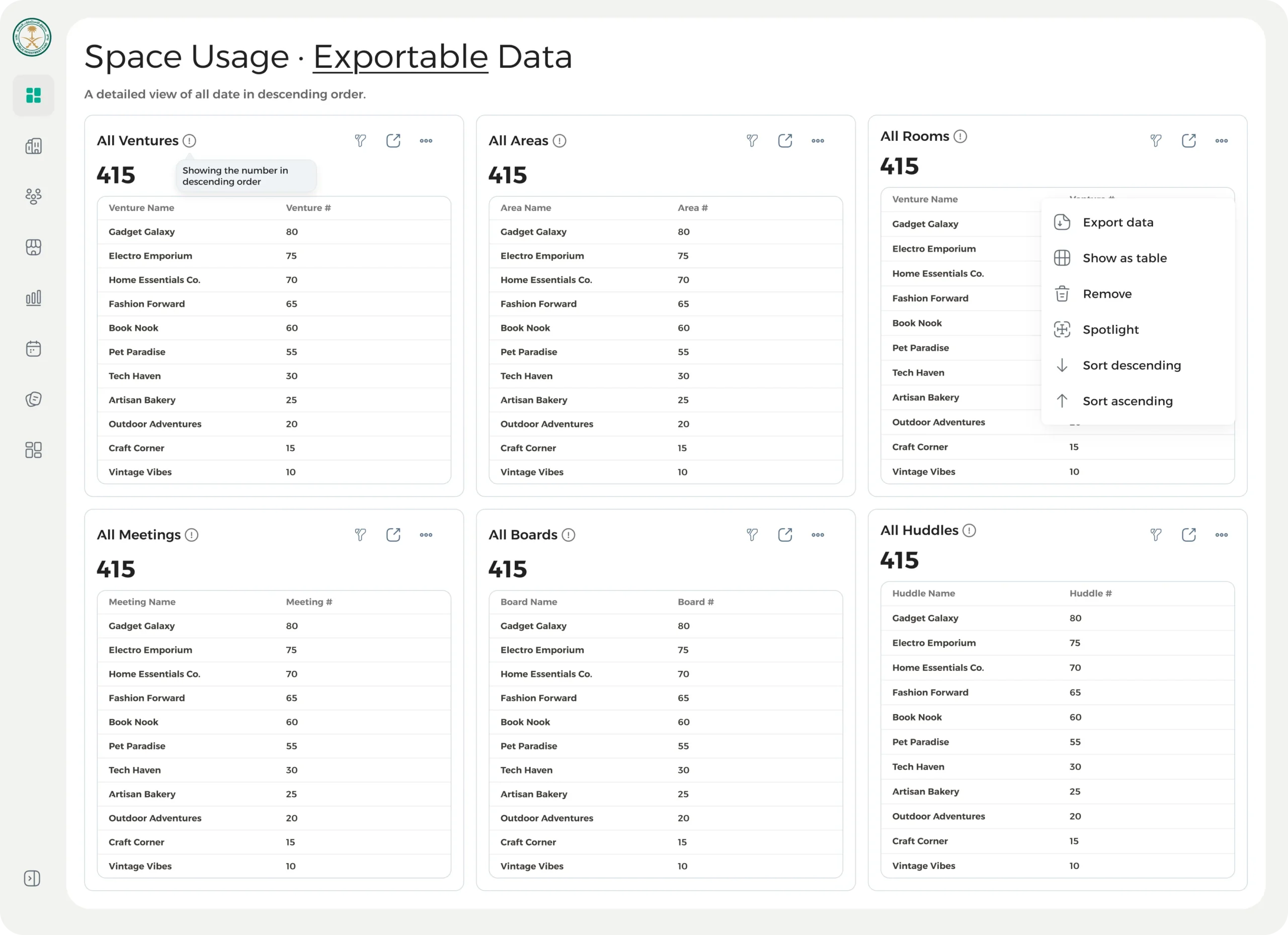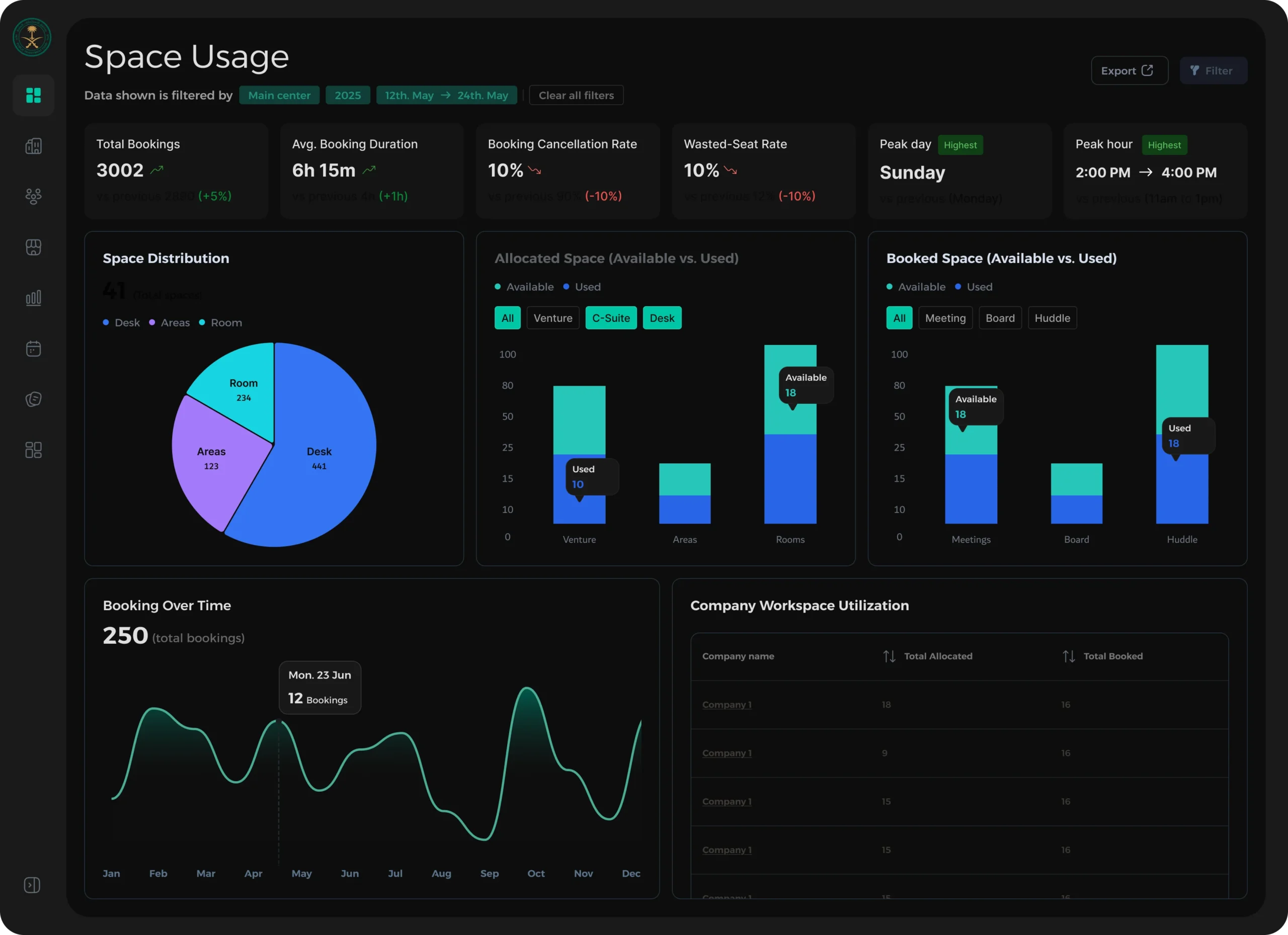The story
I was asked to rebuild how visitors get to meetings at the PIF Tower.
I started on site, watching the real journey: confusing check-ins, repeated ID checks, and people getting lost between the lobby and meeting rooms.
We rebuilt the flow step by step. First, employees verify guests online before the visit. At arrival, the visitor scans one QR at a kiosk—no repeated paperwork.
The Makani mobile app then guides them inside the building using sensors and clear signs. When they reach the room, a conference tablet shows the agenda, lets them order drinks, and control the TV, AV, IPTV, temperature, and lighting—so meetings start on time without tech issues.
I led the design across mobile, kiosk, web, signage, and room tablet—using one accessible, bilingual design system (Material Design 3) with shared tokens. Result: faster check-ins, fewer hand-offs, and visitors who arrive confident and ready.
Problem
The current visitor journey to PIF Tower is fragmented and slow: verification happens late at the lobby, creating queues and repeated ID checks; wayfinding is unclear after check-in, so guests rely on staff or get lost between elevators and floors; and once inside the room, meetings start with a technical scramble across separate AV/IPTV/HVAC/lighting controls. Each touchpoint—employee web, kiosks, mobile app, signage, and room tablet—uses inconsistent interfaces, lacks a universal “single key” to bind the visitor record, and offers weak fallbacks for offline or exception cases. Accessibility and Arabic/English parity are uneven, increasing cognitive load and support needs. These issues raise operational costs, delay meeting starts, and erode visitor confidence. A unified, upstream-verified, QR-driven flow with continuous guidance and consolidated in-room controls is required to deliver a fast, predictable experience.
